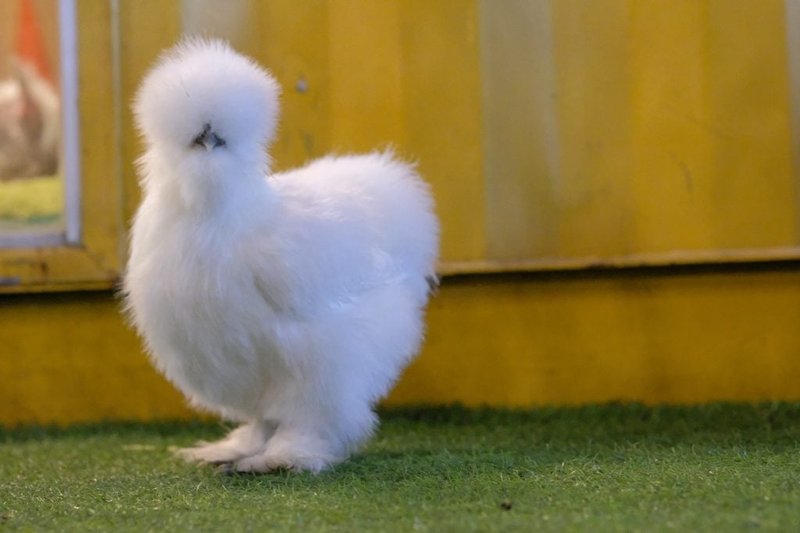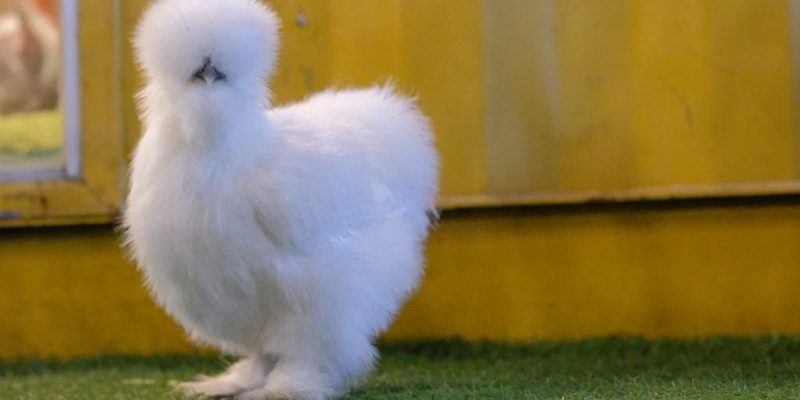
In this article, we’ll dive into the details of Silkie chickens, exploring their history, current status, and what their future looks like. As we sip our coffee together, imagine the world without these delightful birds. What would that mean for backyard farmers, chicken enthusiasts, or even just folks looking for a bit of joy in their lives? Let’s dig deeper.
What Are Silkie Chickens?
Silkie chickens are a *unique breed* known for their fluffy plumage, which characteristically appears more akin to fur than feathers. They have an unusual appearance, featuring black skin, blue earlobes, and a small crest of feathers on their heads. Originally from Asia, they’ve been cherished for centuries due to their distinct looks and gentle nature. Picture a pet that’s both adorable and friendly—Silkies are often the go-to choice for families and children.
Their soft feathers aren’t just for show. In fact, the Silkie’s fur-like plumage keeps them warm in cooler weather, making them fairly resilient. This breed is also known for being broody, which means they love to sit on eggs and take care of chicks, often nurturing them with great care. This trait makes them appealing to anyone interested in hatching and raising chickens.
But despite their popularity in backyard flocks, Silkie chickens can face challenges that might put their status at risk. Let’s explore whether they’re considered threatened or endangered.
The Threatened Status of Silkie Chickens
When it comes to classifications like “threatened” or “endangered,” it’s essential to understand the differences. A *threatened* species is one that is likely to become endangered in the foreseeable future. Meanwhile, *endangered* means the species is at imminent risk of extinction.
Currently, Silkie chickens aren’t listed as endangered or threatened by organizations like the International Union for Conservation of Nature (IUCN). However, they are considered a *heritage breed*, which means they have distinct qualities and a unique genetic background that aren’t as common in mainstream poultry. This heritage status could point to vulnerabilities if breeders don’t maintain their populations.
One significant aspect to consider is how breeding practices have influenced the Silkie’s availability. Many backyard enthusiasts love keeping Silkies, but commercial farming often favors more productive breeds. This shift can lead to fewer Silkies being bred, putting their availability at risk.
Conservation Efforts for Silkies
While Silkie chickens are not endangered, efforts are being made to ensure their populations remain healthy and stable. Many poultry clubs and organizations focus on raising awareness about heritage breeds. They aim to educate the public on the benefits of keeping diverse poultry, including Silkies.
One great initiative is breed preservation programs. These programs encourage small-scale farmers and hobbyists to raise Silkie chickens, promoting sustainable breeding practices. By fostering interest and passion for these birds, enthusiasts can help keep the breed thriving. Sharing knowledge and resources can lead to a more informed community, which ultimately benefits the Silkie population.
Additionally, participating in local poultry shows and events can help foster a greater appreciation for Silkies. When people see these chickens up close and learn about their traits, they often become more inclined to consider them for their own backyards.
How to Care for Silkie Chickens
If you’re thinking about raising Silkie chickens, it’s vital to understand their specific care needs. These charming birds require a bit of extra attention, especially regarding their fluffy feathers. Here are a few care tips:
- Housing: Ensure they have a clean, dry coop that provides enough space to move around. Silkies can be a bit less robust than other breeds, so watch for drafts and keep them warm.
- Diet: A balanced diet is crucial. Provide quality chicken feed with extra protein during laying or broody seasons. Supplementing with fresh greens and insects can also be beneficial.
- Health checks: Regular health checks are essential. Keep an eye out for any signs of illness, and ensure they get enough space to roam and play. A happy Silkie is a healthy Silkie!
Honestly, tending to Silkies can be a rewarding experience. Their friendly nature makes them great companions, and they often bond well with their owners, showing playful and curious behavior.
The Role of Silkies in Urban Farming
Urban farming has become increasingly popular, and Silkie chickens fit right in! Their gentle temperament and smaller size make them a delightful choice for city dwellers. Many people are drawn to keeping Silkie chickens as pets or for educational purposes, especially for kids who love animals.
Having a few Silkies in your backyard can also provide benefits beyond companionship. They help with pest control in gardens, munching on insects, and even providing natural fertilizer with their droppings. Plus, there’s something special about the fresh eggs they lay, which often come in shades varying from white to tinted.
However, it’s important to check local regulations on keeping chickens. Some cities have specific rules on flock sizes and types of birds that can be kept. Understanding these regulations will help you ensure a stable environment for your Silkies.
Raising Awareness About Silkies
One of the best ways to support Silkie chickens is by spreading the word about their unique qualities and appeal. If you’re passionate about backyard farming, share your experiences and knowledge with others. Social media platforms can be great places to showcase the adorable nature of Silkies. You might find that inspiring others to consider these sweet birds helps keep their populations thriving.
Consider getting involved with local poultry clubs or organizations that focus on heritage breeds. They often host events and workshops centered on educating the community about various chicken breeds, including Silkies. Encouraging discussions and sharing personal stories can foster a deeper appreciation for these special birds.
Here’s the thing: every conversation helps. When people understand the beauty and importance of keeping heritage breeds like Silkies, they become advocates for their preservation.
While Silkie chickens are not currently classified as threatened or endangered, various factors can impact their future. From breeding practices to urban farming trends, several dynamics play a role in their population stability. To ensure these fluffballs continue to thrive, we must support conservation efforts and raise awareness about their unique qualities.
By fostering a love for Silkie chickens and encouraging good breeding practices, we can all contribute to the future of this delightful breed. So, if you’re considering adding some joy to your life, why not think about welcoming Silkie chickens into your world? After all, who wouldn’t want to enjoy the charm and companionship of these fluffy beauties?

